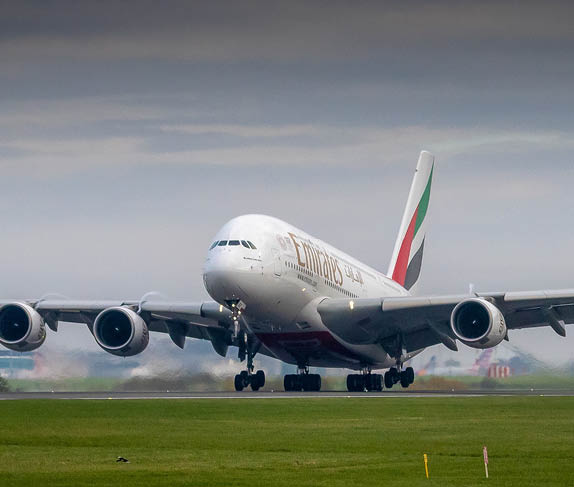The situation at Air France is becoming confusing. Conflicting reports have surfaced with direct quotes. Air France has denied that plans to expand its Transavia low-cost airline have been dropped following a 10-day strike by its pilots. But the French transport secretary, Alain Vidalies, had told RMC radio that "the Transavia Europe project has been abandoned by management".
But Air France said the announcement was "premature", and that it had only proposed to suspend the scheme. Meanwhile the strike continues to cost the airline €15m per day (at least).
On Monday, Air France offered to freeze plans to expand the budget airline, but the pilots' union SNPL rejected the offer, describing the move as a "smokescreen".
This is just another example of unions destroying the airline that provides them with work. In recent times only Willie Walsh has proved to be more than a match for union discord. Now Air France seems to be caving in and if it does then shares might rise in the immediate term as the dispute settles down but in the next few weeks many investors will pull out as it becomes clear that Air France will not be able to compete with other European low-costs gradually connecting the dots through France.
The mighty US airlines are not having a good week either as investors start to selloff AAL and DAL following negative PRASM guidance revisions from American and Delta, which point to competitive pressures both in the US market but also on major international routes. There is widespread thinking among US investors that airlines have reached their peak in this cycle and the outlook is turning bearish.
The fact is that it is too soon to be writing off the US majors, depressed fuel costs alone will give them a boost in Q3 but there is growing evidence that the Middle East majors are starting to show-up on the IATA figures. The greatest growth in premium traffic for July occurred on North Atlantic routes at 17.6% of premium traffic share, 27.3% of premium traffic revenue while on Mid-Atlantic routes which were up 15.1% year-on-year, followed by Africa-Middle East routes which were up 12.2%. No small part of this increase is due to the increase of premium seats on these routes due to the growth of Middle East airlines in the North American market.
So where should A380s be flying today? As a premium traffic driver they should be following and generating these figures: Premium traffic within Europe now holds 16.1% of global premium traffic market share and 5.7% of premium traffic revenue; routes within the Far East have 14.4% of premium traffic market share and 6.6% of premium traffic revenue share, Europe-Far East routes have .5% of premium traffic share but have an outstanding 13.3% of premium traffic revenue share while North and Mid-Pacific routes have 6.1% of premium traffic share and 11.3% of premium traffic revenue.
The USA saw economy passenger traffic on domestic North American routes increase by 10.1% year on year for July, while North America-Central America economy traffic was up 9% for the same period, North and Mid-Pacific routes were up 8.7% and Mid-Atlantic routes were up 7.1%. South America saw economy traffic fall back 6.3% year-on-year for July while Africa-Far East economy traffic was down 4.3%, South Pacific routes were also down by 4.2% and North America-South America economy traffic saw a 3.5% decline.
IATA reported that combined international premium and economy passenger traffic fell for a second consecutive month in July as year-on-year growth stalled at 2.6%, with a 0.4 point improvement on July 2013. This stalling growth is due to a combination of weakening tourism demand across Southeast Asia due to aircraft losses and political shocks and a far weakened South American market as the Brazilian economy slows rapidly, the Venezuelan aviation market is all but closed and the Argentinian economy continues to falter. July year-over-year declines in premium traffic on routes within South America (down 15.3%), South Pacific routes (down 7.6%) and routes within the Far East (down 2.4%).
However while all this is going on premium passenger traffic worldwide grew 3% year-on-year in July, exceeding both June’s 1.8% growth performance and July 2013’s 1.4% premium travel growth rate. July growth in global economy passenger traffic was 2.6% year-over-year, up 0.1 point from June, and up 0.3 point from July 2013.
So as airlines provide us with a mixed bag of results, the lessors can remain buoyant for most regions at this time, with one eye remaining on what central banks might do to derail their party. It is ironic therefore to note that as the ISTAT lessor panel this week took a pessimistic approach for the first time in many years in warning potential investors of possible pitfalls, managers over the other side of Europe at Aegon's High Income fund managed by Kames Capital – the Kames Diversified Income fund – were bigging-up aircraft leasing and Asia property as their key to generating rising and dependable income even if the capital value may fluctuate over time.
Also today, AerCap Holdings has announced that AerCap Ireland Capital and AerCap Global Aviation Trust propose to offer $800 million aggregate principal amount of senior notes, consisting of two tranches of varying tenor in a private placement. The Notes will be fully and unconditionally guaranteed on a senior unsecured basis by the Company and certain other subsidiaries. The Issuers intend to use the net proceeds from the Notes for general corporate purposes.

